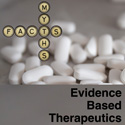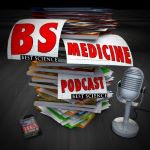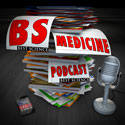Episode 42: Obesity – what’s the big deal? – Part II
In episode 42, we continue to take a bite out of the big problem of obesity by getting down and dirty with “diets” and drugs. As usual, lifestyle issues win out and James and Mike celebrate this news by pigging out – but it’s OK because we used small plates.
Show Notes
1) Lifestyle beats out drugs
Stopping patients with IGT going to DM
Metformin, acarbose, rosiglitazone: NNT = 7-14 (?)1-4
Lifestyle NNT= 4-9 1,5,6
Developing the metabolic syndrome 7
Metformin vs Lifestyle NNT: Resolve = 20 vs 5
IGT to DM long-term
7 years 8 (3 yrs without intervention): NNT = 32/yr
20 years 9 (14 yrs without intervention): NNT 7 (or 140/yr) with 93% vs 80% DM
3. Diabetes Care 2006;29:2095-101
5. Diabetes Care 1997;20:537-44
7. Ann Intern Med 2005;142:611-19
2) Little evidence for any one commercial diet over another
3) No difference if you eat fat or protein or carbs
Arch Intern Med 2006;166:1466-75
Am J Clin Nutr 2005;81:1298-306
Arch Intern Med 2004;164:210-7
Ann Intern Med 2004;140:778-85
4) Top 10 tips for weight loss
Arch Intern Med 2007;167:1277-83
6) Drugs for weight loss Sibutramine and orlistat
Fluoxetine vs sibutramine or orlistat
Arch Intern Med 2004;164:1395-404
Ann Intern Med 2005;142:532-46
Ann Intern Med 2005;142:547-59







